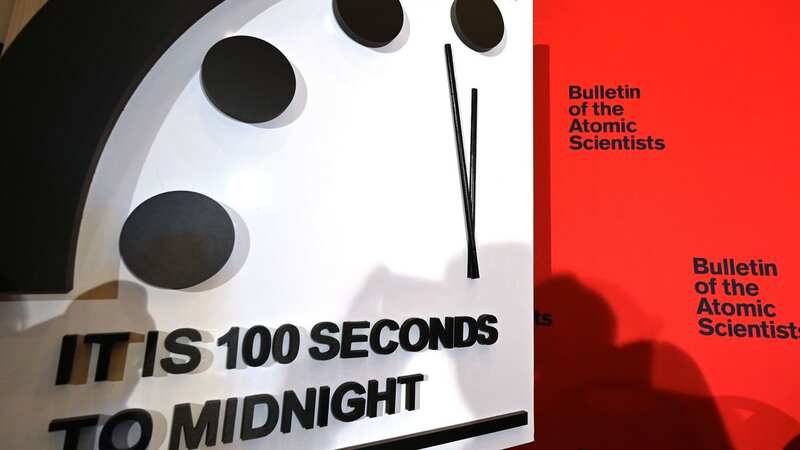Grim Doomsday Clock explained - as latest time is confirmed in horror update
Last year, the Doomsday Clock ticked closer to the end times than it ever has done before - striking at a worrying 90 seconds to midnight.
Today (January 23), at 3pm, the Bulletin of the Atomic Scientists, announced that it has stayed at 90 seconds to midnight, and many are understandably worried by the frightening update.
Designed by painter Martyl Langsdorf, the Doomsday Clock has been used to measure the likelihood of man-made disaster since 1947, with the 'midnight' point serving as a stark metaphor for the complete collapse of civilisation.
The clock is maintained by members of the Bulletin of Atomic Scientists' Science and Security Board, with the aim of conveying 'just how close humanity is to destroying itself'. Every year, the group, which includes 10 Nobel laureates, determine how close we are to midnight, bearing in mind factors such as climate change, articial intelligence, and the looming threat of nuclear weapons.
First established two years after the end of World War II, the intention behind the clock was to warn people of the potential for manmade destruction, thus sparking action before it's too late. The time was initially set to seven minutes to midnight. In the decades since, the furthest we've been from global catastrophe was in 1991, when the time was set at a relatively 'safe' 17 minutes to midnight.
 EastEnders' Jake Wood's snap of son has fans pointing out the pair's likeness
EastEnders' Jake Wood's snap of son has fans pointing out the pair's likeness
In a recent BBC documentary, Nuclear Armageddon: How Close Are We?, which was aired ahead of the yearly reset, reporter Jane Corbin looked into how close humanity really is to global catastrophe, and a number of viewers were left rather disturbed by the 'very uneasy' watch.
In the doc, three-times Royal Television Society Award winner Corbin, led viewers through the disquieting history of nuclear weapons as subsequent disarmament, including the Cold War and the Cuban missile crisis.
Corbin visited the New Mexico site of Robert Oppenheimer's Manhattan Project, a US-led research and development programme which produced the very first nuclear weapons during the dark days of World War II.
As dramatised in the acclaimed 2023 biopic, theoretical physicist Oppenheimer did express some concerns about the use of the atomic bomb once it was out of his hands. In reality however, he did believe it was crucial in ending the war, and so did not go as far as to regret it.
Current affairs specialist Corbin also addressed the strategy behind Trident, Britain's nuclear deterrent based on the west coast of Scotland, which has sparked much debate over the years. In another part of the show, she spoke with a group of Suffolk-based activists who are currently campaigning against a new generation of US weapons potentially being deployed on UK soil.
The doc has made many viewers feel more than a little on edge. Taking to the social media platform X, formerly known as Twitter, one person wrote: "Well this is a mildly terrifying watch, very uneasy." Another remarked: "Ahh, I miss the 70s. The Cold War, growing up in the paranoia of a decadent Western government, an impending sense of doom with the threat of nuclear Armageddon. Happy days. I might have to cheer myself up with a nice film. Threads anyone?"
You can stream Nuclear Armageddon: How Close Are We? on BBC iPlayer now
Read more similar news:
Comments:
comments powered by Disqus


































